Which Is Better: Apple Watch or Fitbit?
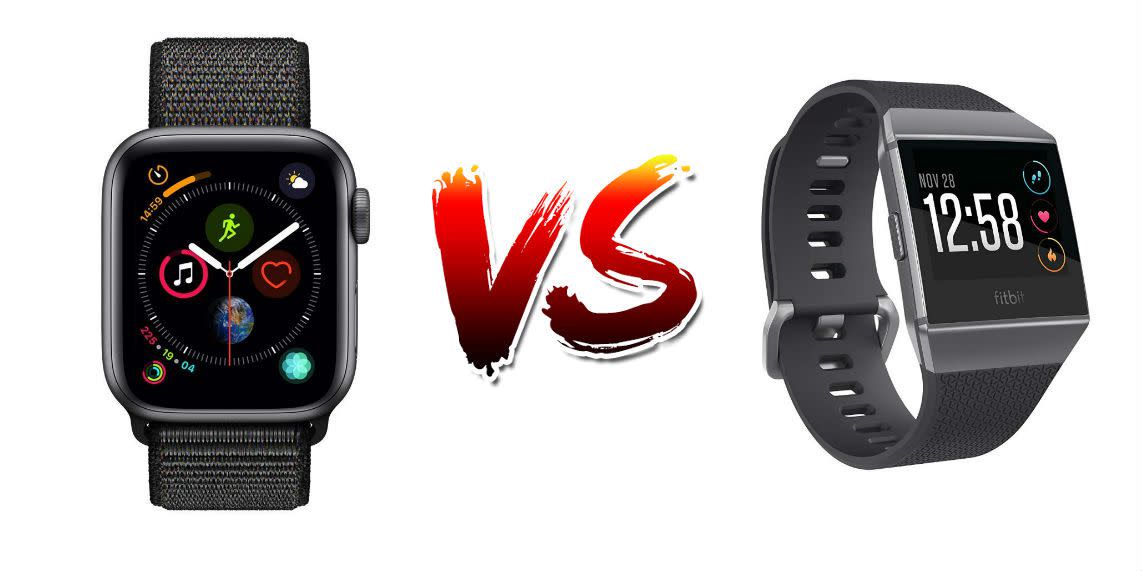
The world of smartwatches is getting competitive with recent additions from companies that are more famous for making GPS devices and running shoes. If you are looking for a lifestyle smartwatch that can also handle your runs or Crossfit sessions, two names still float to the top: the Apple Watch and the Fitbit Ionic.
Apple's device conquered the smartwatch market, while Fitbit popularized athletic tracking wristwear from the get-go. The Fitbit works with iPhones and Android, while the Apple Watch really only works with iPhones, so that might be your decision right there.
But, if you’re still mulling it over, here are a few other things to think about.
Price
For some, the choice will be as simple as the bottom line. In that case, the Fitbit is going to be for you.
The GPS-enabled Apple Watch 4 with sport band is going to run you $400, if you’re feeling like a sporty Dick Tracy, then enable it with cellular data so you can answer calls without your phone. Just know that will cost you another $100, for a grand total of $500. Your cell carrier will want a piece of that pie, too, and will probably add an additional charge for that cell access.
The Fitbit Ionic, the brand’s top-of-the-line watch, will run you $270, though we have seen sales on their website (something you won’t see with Apple) for as low as $230. One other plus for Fitbit is that the brand features more affordable fitness trackers in its lineup, such as the Charge and the Alta, for people who want athletic data without all the fancy features of a smartwatch.
But for the sake of comparison, this article will be talking about the Ionic.
Design
Both watches feature a similar design with a square watch face (which perhaps can be attributed to Apple setting the standard for wearable tech design). Both watches also offer a variety of bands to best support your needs, and, more importantly, your style. The same can be said for the color of the watch case. Pick out a few bands, mix and match, embrace being “that guy.”
On the software side, both watch faces are also highly customizable. Fitbit has a variety to choose from, and you can even go into a fairly in-depth online design page to get exactly what you want. Apple comes with just as much variety and lets you pick the features of the watch that you like the best, like fitness tracking, and have their stats displayed more prominently.
Biometrics
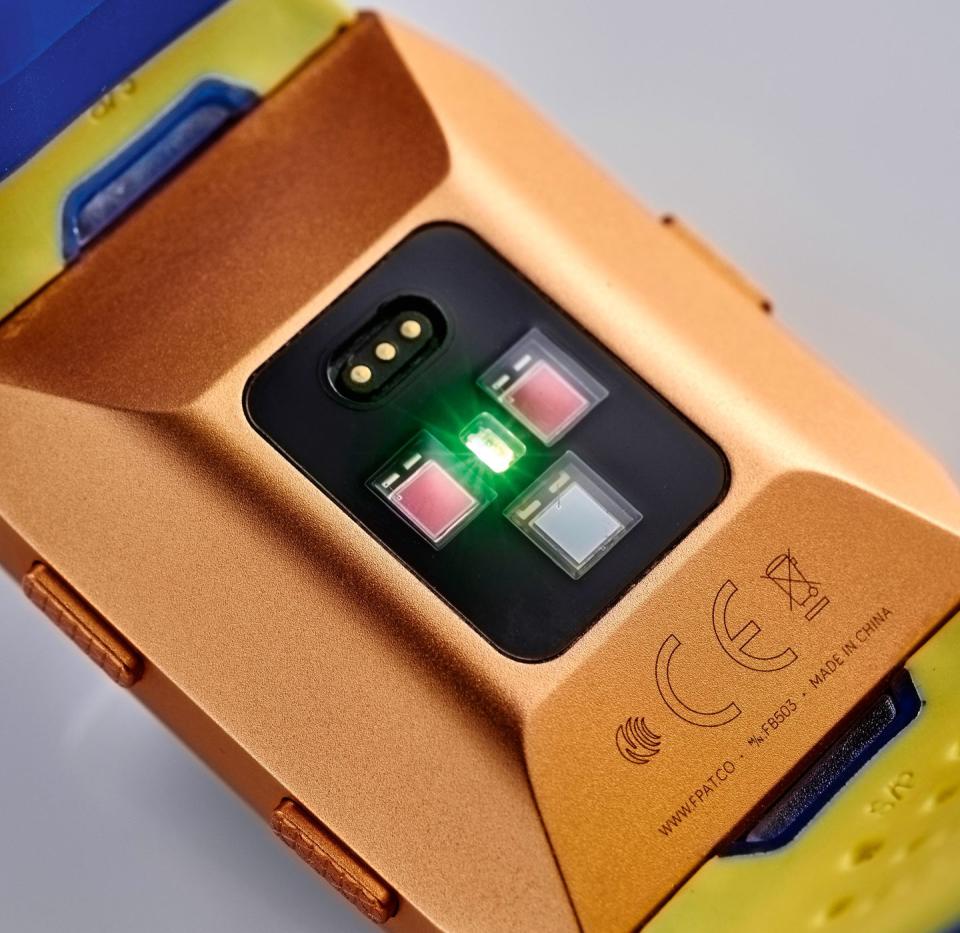
Fitbit tracks your heart rate continuously and uses it for fitness guidance, sleep tracking, and guided breathing sessions.
The Apple Watch also tracks your heart rate, but it does so with a wrist-based ECG. This tech goes beyond just your heart rate-its also tracks your heart’s electrical signals and how they change based on your activity. Apple says this can help you learn if you are having heart issues like atrial fibrillation or irregular heartbeats. Then you can give that info to your doctor. Apple also uses this tech to track sleep and workouts.
The Apple watch also has accelerometers for built in fall detection. If you take a hard tumble, it’ll know and help link you with those who can help.
GPS
Both watches come GPS equipped to tell you how far you’ve gone and what your pace is. So either way you go, you'll at least know where you're going.
Fitness Tracking
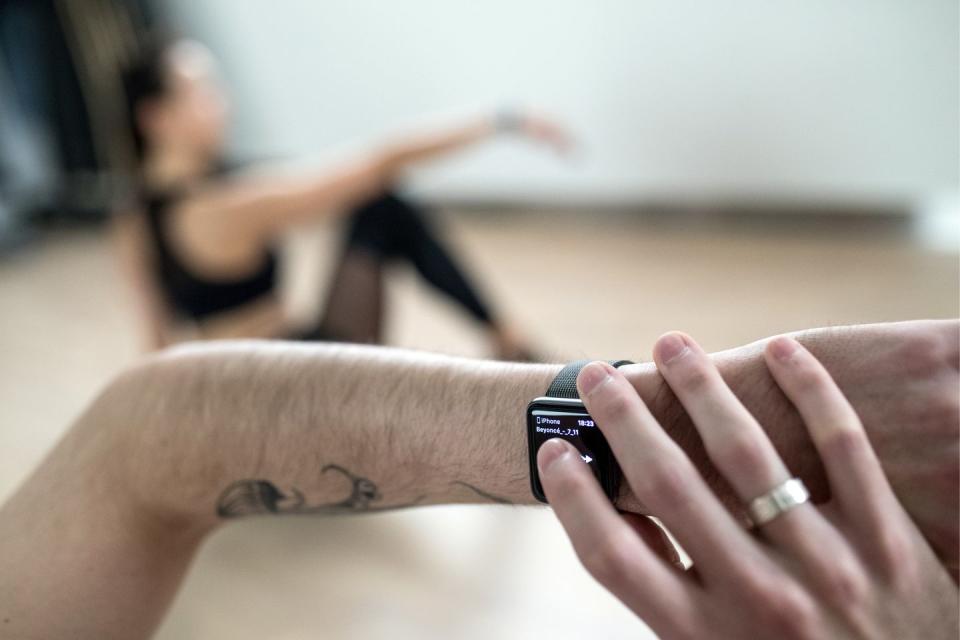
Both watches have a variety of sport modes to most accurately track your activity based on what you are doing. For Fitbit, that means swim mode that gives you stats like laps, speed, and strokes. The Fitbit also automatically enters run mode whenever you enter run mode, and pauses when you stop at a crosswalk. Apple will also suggest entering workout modes when you start moving.
Both will also track your heart rate zones to determine how hard you are working, like fat burn, cardio, and resting, and suggest changes to your workouts. Both also work with popular fitness apps like Strava. Apple also taps into its broad app store for apps specific for activities like surfing and tennis.
Fitbit has a feature called Smartrack that combines all of your workout tracking into one place to view as a whole, while Apple Watch works with the in-house fitness app.
Apple also allows you to invite friends with apple watches to compete at who can exercise more over a given amount of time and it has awards you can earn for workout milestones to keep you motivated.
Another feature we like about the Apple Watch is that it tracks how much you have moved, stood, and exercised in a day and displays the data in easy to digest concentric rings. The rings slowly fill throughout the day and just might be the motivation you need to actually use that standing desk.
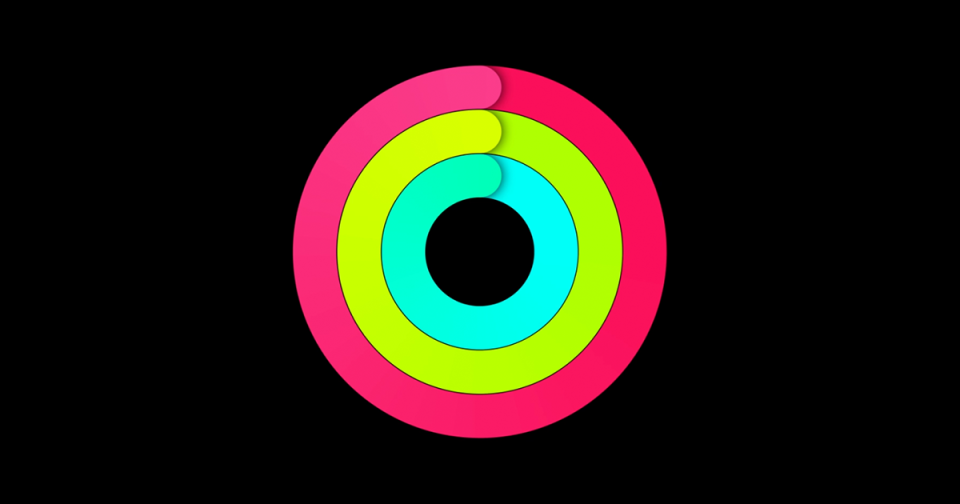
Phone Integration
For ultimate connection, you have to go with the Apple Watch 4 GPS and Cellular. This will let you leave the house without your cellphone, but you will still be able to take and make calls as well as sending texts. That also means an hours long run without strapping your phone to your arm.
Fitbit will sync with Androids and iPhones, but will only let you take calls on your wrist with Android, but you'll need your phone with you. But both watches can send alerts to your wrists about texts, email, and your other app notifications
Music
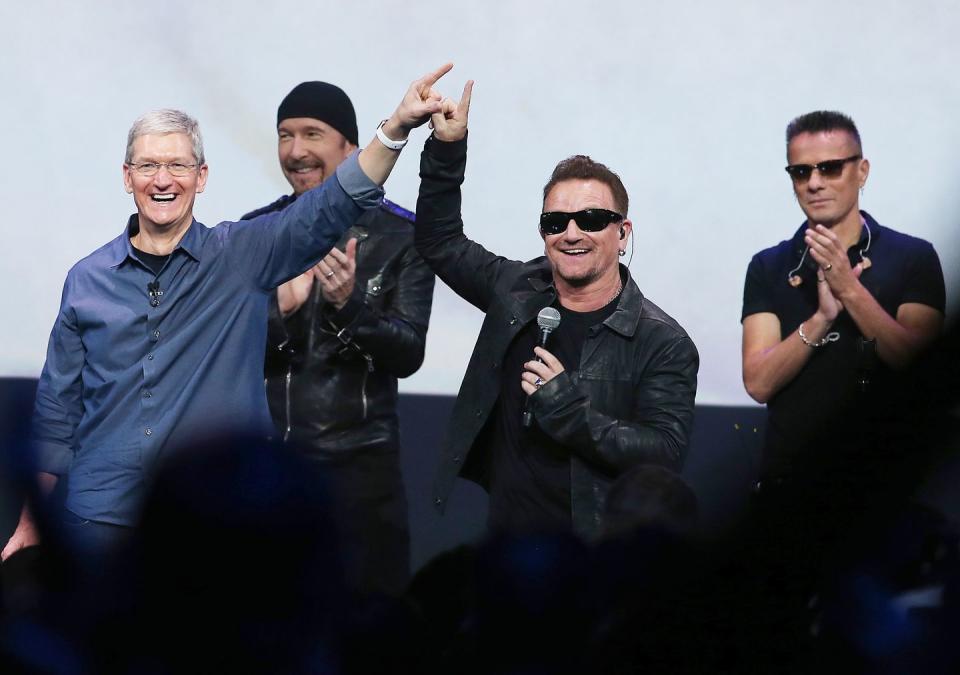
The Apple Watch lets you utilize Apple Music and podcasts, and 16GB of memory means you can keep your favorite songs from iTunes as well.
Fitbit has storage capacity for 300 songs. That's a bit less than Apple's storage capacity, but it'll likely get you through your run. Of course, you can also use apps like Pandora and Deezer.
Additional Features
Both watches are water resistant to 50 meters, so wear and use them. Both also have battery life that should last you more than a day, Fitbit claims its watch will last 5 days without GPS use and 10 hours with constant GPS usage while Apple says their watch, when being actively used, will last 18 hours.
Both watches also have payment methods right on the wrist with Apple Pay and Fitbit’s incorporated NFC chip for contactless payment.
The Apple Watch knows when you exits swim mode and pulses sound from the speaker to clear it of water, which is just about the coolest thing ever.
Apple has a few features that you’re likely familiar with from the Apple universe like Siri, Maps, and walkie-talkie communication with other Apple Watch wearers.
Bottom Line:
If you're a devoted Apple acolyte and money is less of a concern, the Apple Watch is a great workout companion that also won't clash with your personal style after you leave the gym. There's a reason why Apple often sets the standard for whatever hardware they create, and that reason is on full display with the Apple Watch.
But if you don't like the idea of getting sucked further into Apple's orbit, love Android's way of doing things, or just want something that's cheaper but doesn't sacrifice much to get there, the Fitbit Ionic won't disappoint you. You'll find that it'll quickly become an indispensable part of your day.
But the good news is either way you decide, you're going to be happy.
('You Might Also Like',)

